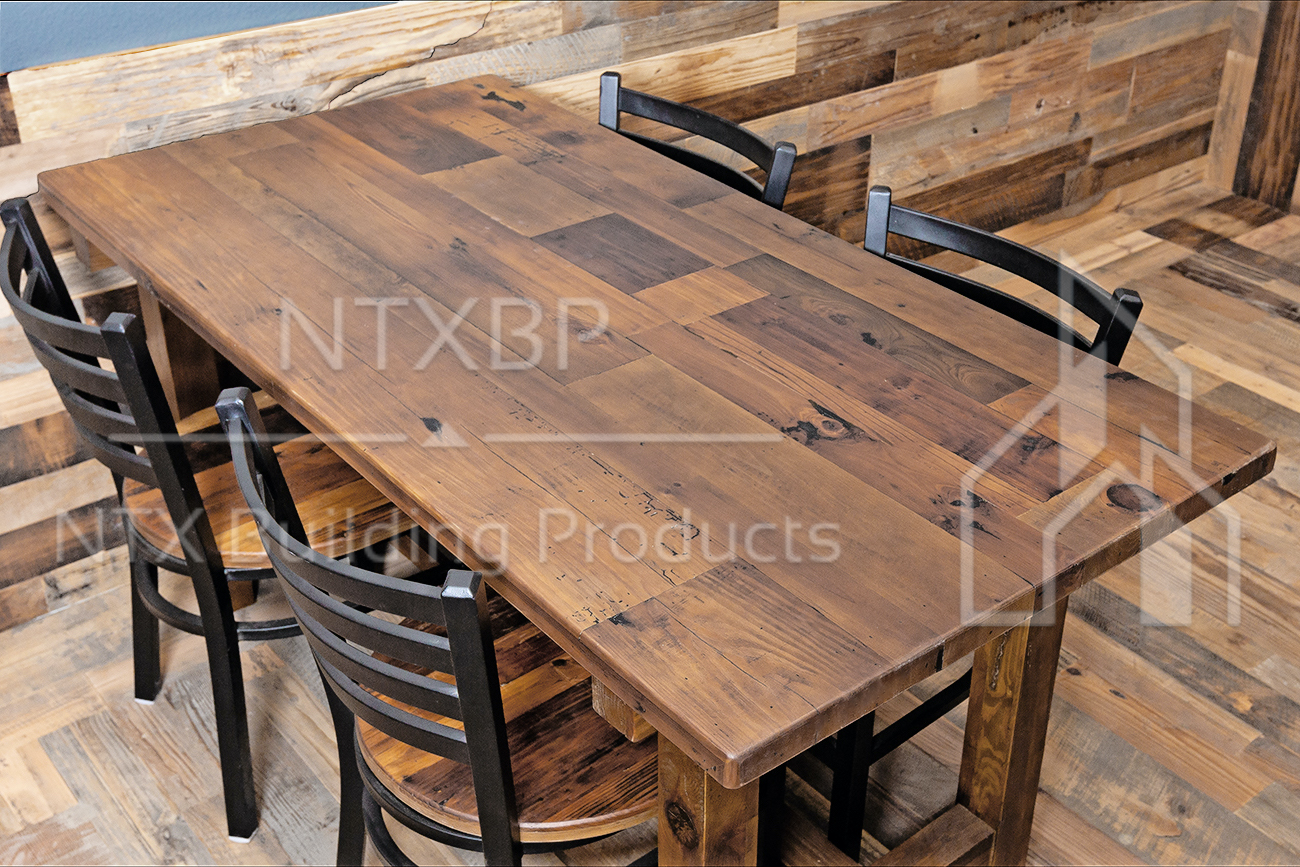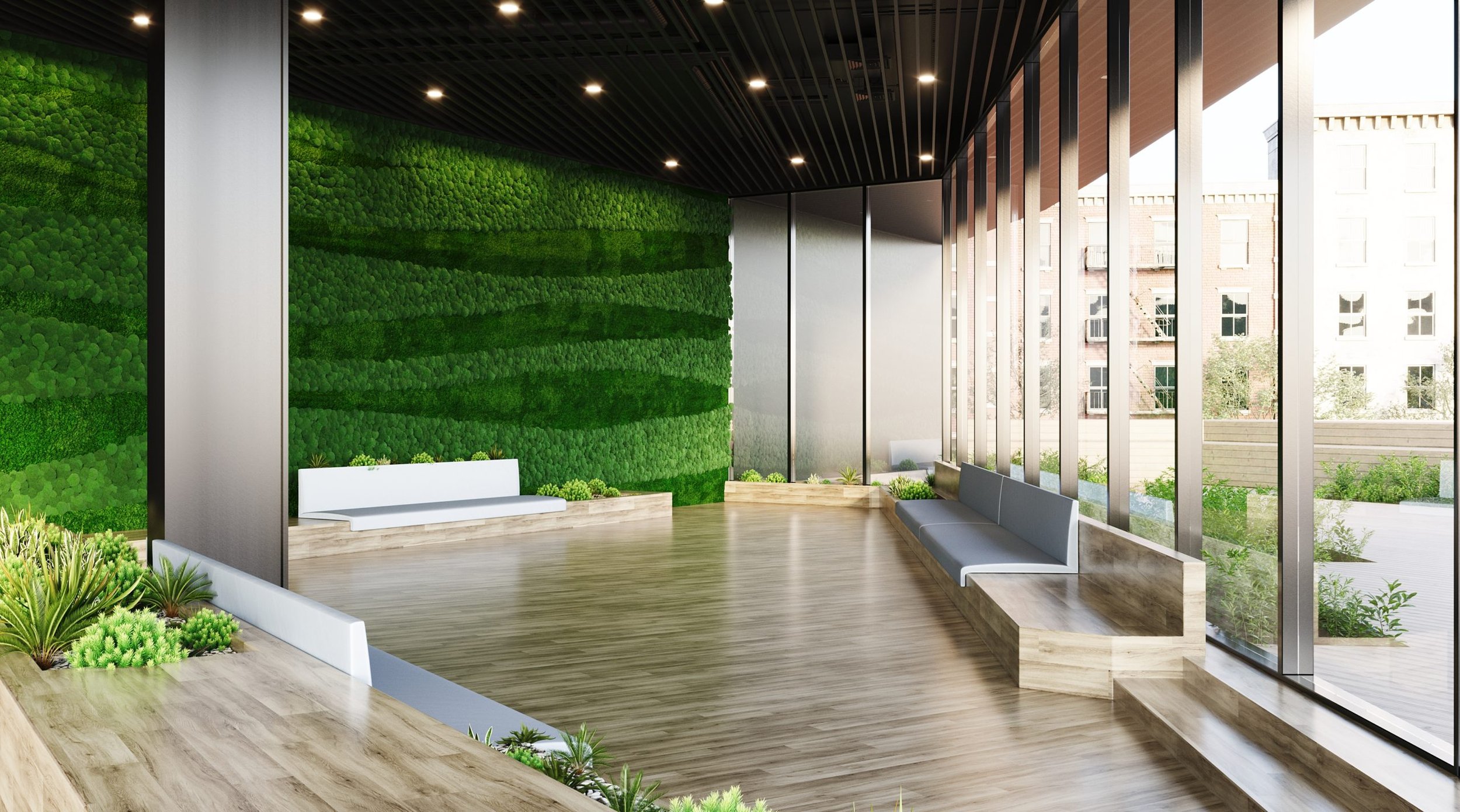2025 Workplace Design Trends: Furniture, Acoustics, Natural Lighting & Visual Identity
/How innovative furniture solutions, advanced acoustic design, natural lighting systems, and visual storytelling are reshaping modern workspaces for the hybrid work era
The modern workplace is undergoing a dramatic transformation in 2025. No longer just a place to work, today's office has evolved into a strategic environment designed to inspire, connect, and transform employees. Four key elements are driving this evolution: innovative furniture solutions, advanced acoustic design, natural lighting systems, and powerful visual storytelling.
Understanding how these elements work together is crucial for creating workspaces that meet the demands of hybrid work while delivering measurable performance improvements and employee satisfaction.
The New Furniture Paradigm: Flexible, Connected, and Performance-Driven
From Static Desks to Dynamic Workpoints
The traditional assigned desk is becoming extinct. The shift to flexible workpoints represents a seismic change in how we utilize office space. Instead of assigning each employee a desk for their singular use every day, workpoints are versatile work settings that can be used by anyone as needed throughout the day.
This transformation addresses the reality of hybrid work, where employees alternate between office, home, and co-working spaces. Companies are investing in height-adjustable desks, ergonomic chairs, and modular furniture systems that cater to various postures and work styles. The emphasis is on adaptability—furniture that can transform spaces quickly and efficiently throughout the day.
Smart Technology Integration
Modern office furniture is becoming increasingly intelligent. Furniture manufacturers that can offer electronic lock solutions provide enhanced security and convenience, especially in shared work environments. These systems offer secure multi-user access and simplified management of personal storage.
Beyond security, connectivity drives modern furniture design. Desks and accessories equipped with cable management systems and built-in USB ports create organized workspaces where technology seamlessly integrates with furniture design. These features support the tech-forward demands of modern knowledge workers.
Collaborative Furniture Design
By pooling resources and dedicating square footage to shared needs and tasks, companies can offer enhanced amenities that benefit everyone. This includes focus areas for concentrated work, multipurpose zones that adapt to various activities, and spaces that foster community engagement.
Collaborative areas feature lightweight, mobile chairs and modular tables that enable quick space reconfiguration. This mobility allows teams to adapt their environment for different work types, from intimate brainstorming sessions to larger group presentations.
Advanced Acoustic Design: Creating Sound Environments That Enhance Performance
Addressing the Open Office Acoustic Challenge
With the spread of open spaces, one of the main challenges in 2025 will be to control ambient noise, which can quickly become a nuisance. That's why acoustic solutions are one of the major trends of the year.
The solution isn't abandoning open offices but creating intelligent acoustic zones within them. Sound-absorbing materials including acoustic wall panels, vegetated walls, sound-absorbing ceilings, and specialized carpets effectively reduce noise pollution while maintaining the collaborative benefits of open design.
Revolutionary Acoustic Materials and Solutions
Modern acoustic solutions extend far beyond traditional panels. Design-driven acoustic solutions using sustainable, customizable materials are transforming spaces with innovative ceiling, wall, office and lighting solutions. Advanced acoustic panels made from 100% polyester using 40-50% recycled materials achieve impressive sound absorption with Average NRC ratings of 0.75-0.85.
These solutions are lightweight, flexible, and offer unlimited design possibilities, allowing architects and designers to create both functional and aesthetically pleasing acoustic environments.
Biophilic Acoustic Innovation
A revolutionary trend combines acoustic performance with biophilic design principles. Preserved moss walls constructed with acoustic backing materials are proven to attenuate noise, reducing stress within the workplace and enabling concentration while providing visual connection to nature. These acoustic-dampening moss panels feature high sound absorption values of .70 and are fully custom, handmade designs.
The preserved moss requires no maintenance, water, or sunlight while delivering the same biophilic benefits as living walls, making it an ideal solution for modern workplaces.
The Health Impact of Acoustic Design
Acoustic comfort has emerged as an important focus within architecture and interior design. Environments with high levels of resonant sound are detrimental to concentration and communication. Studies indicate that prolonged exposure to unwanted noise causes the body to release cortisol and adrenaline, stress hormones that can increase LDL cholesterol levels.
Strategic acoustic zoning recognizes that different activities require different sound environments, from quiet focus work to collaborative discussions.
Natural Lighting Systems: Harnessing Daylight for Performance and Well-being
Revolutionary Daylighting Technology
Natural light has become a critical component of workplace design, supported by both aesthetic and performance considerations. Advanced tubular daylighting systems represent a breakthrough in bringing natural light to interior spaces where traditional skylights aren't feasible. Modern tubular daylighting devices (TDDs) use breakthrough optical technologies that deliver the highest quality natural light with the best color rendition to any space.
These systems can be equipped with accessories like daylight dimmers that dynamically respond to varying daylight conditions, maintaining optimal indoor lighting levels throughout the day without additional artificial lighting.
The Science of Daylighting and Performance
Research from educational environments provides compelling evidence for natural light's impact on human performance. A comprehensive study analyzing test score results for over 21,000 students from three elementary school districts found statistically compelling connections between daylighting and performance improvements. While this research focused on schools, the findings about how daylighting affects human performance are directly applicable to meeting areas, offices, training spaces, and conference rooms.
Students with the most daylighting in their classrooms progressed faster on performance tests, with improvements ranging from 15% to 26% compared to those with the least daylighting. In the California district, students with the most daylighting progressed faster on math and reading tests between fall and spring than those with the least daylighting.
Biophilic Integration Through Natural Light
Solutions like windows, skylights, solar tubes, and light shelves can link people to the outdoors by mimicking their circadian rhythm. In biophilic office design, natural lighting enhances visual comfort by counteracting the flatness of artificial lighting and bright screens.
Research indicates that effective daylighting can lead to an increase in energy and productivity. Sunlight exposure releases serotonin, the happiness neurotransmitter. Daylight exposure is pivotal for maintaining healthy circadian rhythms and sleep-wake cycles.
Visual Identity Through Graphic Art and Design: Creating Immersive Brand Experiences
Storytelling Through Spatial Design
In 2025, office design tells the story of a company's history and values. Office design becomes a powerful means of expressing your organization's identity and reinforcing employee commitment. Colors, graphics, artworks and furniture are all elements that create a real art of living at work and reinforce the feeling of belonging.
Companies are embracing authentically local designs reflecting the unique culture and vibe of each office location — whether Brooklyn or Austin, Dubai or Cincinnati. This trend moves beyond simple branding to create immersive experiences that connect with employees on an emotional level.
The Psychology of Color and Graphics in Workplace Design
Colors are no longer chosen at random: their impact on mood and productivity is recognized and integrated into the design process. Whether it's soft colors for concentration, bright tones to stimulate creativity or warm shades to enhance conviviality, every space benefits from a carefully considered approach.
Integrating decorative and graphic elements such as wall murals or branded artwork reinforces the meaning of chosen colors. This approach creates distinct space identities, improving wayfinding while reinforcing employees' emotional connection to their work environment.
Creating Immersive Visual Experiences
Immersive experiences engage all the senses, drawing individuals into narratives that resonate personally and leave a lasting impact. They promote meaningful engagement that can't be captured in a single static photo op.
This approach creates environments that are "anticipatory and engaging," where visual elements work together to create memorable experiences that make employees excited to come to work.
The Integration: Where All Elements Create Transformative Workplaces
Holistic Environmental Design
The most successful 2025 workplaces don't treat furniture, acoustics, natural lighting, and graphics as separate elements—they integrate them into cohesive experiences. Projects like T3 Sterling Road demonstrate how natural materials and biophilic design create meaningful employee experiences through innovative use of mass timber construction. These spaces invite interaction through authentic wood material, natural light, and direct outdoor connections.
The Science of Biophilic Integration
The Human Spaces global study of 7,600 office workers from 16 countries, commissioned by Interface and led by Professor Sir Cary Cooper, found that employees who work in environments with natural elements report a 15% higher level of well-being, are 6% more productive and 15% more creative overall. This validates the integration of natural materials, preserved moss installations, and nature-inspired design elements as performance enhancers, not just aesthetic choices.
Research shows that exposure to greenery, sunlight, and nature-inspired shapes can reduce stress levels, improve cognitive ability, and lower the risk for hypertension. Biophilic elements support our parasympathetic nervous system, which creates a feeling of well-being.
Neuro-Inclusive Design Integration
Research indicates that approximately 15-20% of the population exhibits some form of neurodivergence, indicating significant demand for adaptable environments. This requires coordinated approach across all design elements.
Key features include customizable lighting systems, sound masking technology, and flexible furniture that adapts to individual preferences. These design elements enhance focus and creativity for everyone while ensuring spaces accommodate different cognitive styles and sensory needs.
The Return on Commute Factor
A defining trend and critical metric for 2025 centers on making offices worth the journey, often referred to as the "Return on Commute." Successful office spaces will deliver experiences unavailable at home – from café-inspired collaboration zones to quiet focus areas and meaningful community connections.
This requires excellence in all four areas: furniture that provides superior comfort and functionality, acoustics that enable both collaboration and focus, natural lighting that enhances performance and well-being, and visual elements that create inspiring, memorable environments.
Looking Forward: The Future of Integrated Workplace Design
As we progress through 2025, the most successful workplaces will be those that masterfully integrate furniture innovation, acoustic design, natural lighting systems, and visual storytelling. The convergence of biophilic design principles, advanced acoustic materials, revolutionary daylighting systems, and flexible furniture solutions creates environments that don't just support work—they enhance human potential.
These biophilic environments reduce stress, naturally boost melatonin levels, increase productivity and creativity, and reduce absenteeism. Organizations that understand these elements work together to create transformative environments where employees don't just work, but grow, connect, and thrive.
The future belongs to organizations that recognize the investment in thoughtful furniture, strategic acoustics, abundant natural lighting, compelling visual design, and biophilic elements isn't just about creating better offices—it's about creating spaces that inspire people to do their best work and choose to be there, day after day.
Ready to transform your workplace? Contact our team to learn how integrating these four essential elements can create a workspace that drives performance, enhances well-being, and attracts top talent.
Sources:
















